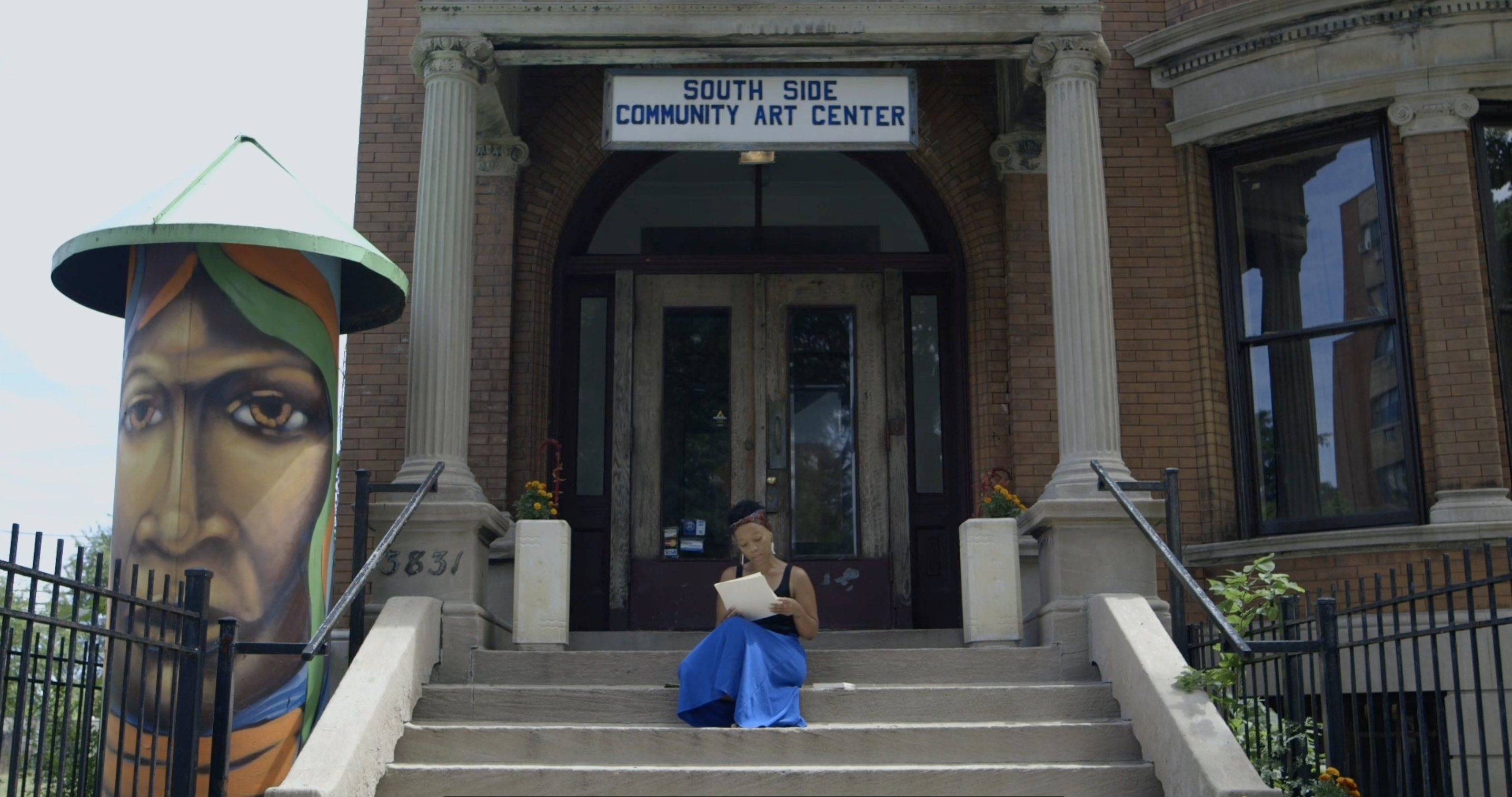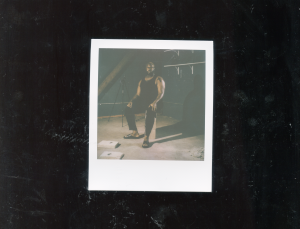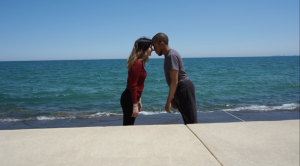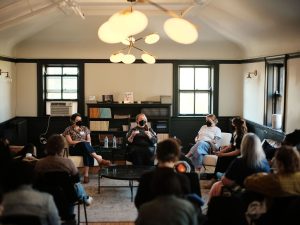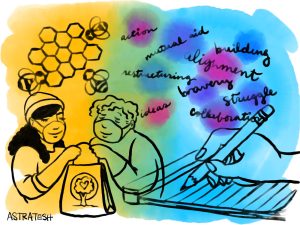The follow text is the transcript for a keynote address that was delivered on August 6, 2020 for ARCHIVES*RECORDS 2020: Creating Our Future, the 2020 Virtual Joint Annual Meeting of the Council of State Archivists and the Society of American Archivists.
This talk has been edited for clarity and length.
* * * *
Hi everyone. I’m Tempestt Hazel, the co-founder of Sixty Inches From Center. It is a complete honor to have been asked to deliver the keynote this year—this rollercoaster of a year. It’s an honor but also a little terrifying because there’s so much to say. And so much that will inevitably be left unsaid in a relatively short keynote address.
In this moment, I am both extremely aware of the power and also the inadequacy of words, which is probably why I wrote this multiple times. I recorded one version and then completely scrapped it, all in order to get to this one.
I want to tell you all of the things. Everything. Why I love Chicago and the incredible cultural and political histories it holds, especially within its neighborhoods, communities, and people. I want to tell you about how I got here—to Chicago but also to archives because of Chicago. I also want to tell you a little bit about and show you the neighborhood that has fed my archives addiction: Bronzeville, the neighborhood where I’ve spent all 13 years of my Chicago life—and this place, the historic South Side Community Art Center, one of, if not the most important set of doors I walked through when I first moved to Chicago from Peoria, Illinois. A place that, like Sixty, is in a historic year—the 80th year of its tireless work to promote Black art and artists—and a place that, too, hasn’t been allowed to celebrate it in the ways that it and its incredible history deserve to be celebrated.
But to begin to scratch the surface of this idea of CREATING OUR FUTURE, I’m first going to talk about Sixty.
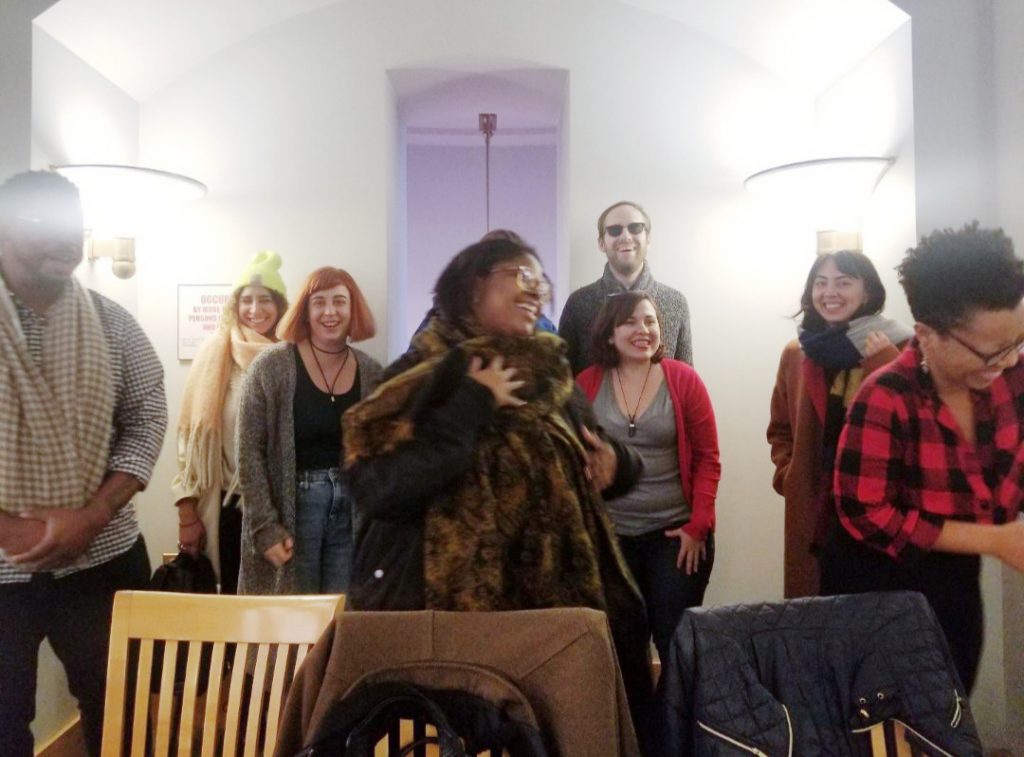
Sixty Inches From Center started in 2010, so 2020 is actually our 10 year anniversary. Primarily through our online arts publication and archiving initiatives, we support and promote art and writing that thrives primarily outside of mainstream historical narratives. We forefront conversations that are by, about, and for communities that are often omitted from art history’s most widely circulated tellings by promoting artists, writers, and cultural workers across the spectrum of gender, race, disability, and discipline.
We embrace practices that are complex, intentional, political, and hard to define because those are characteristics of our collective, our team, as well as our communities. These practices are Black, they are Indigenous, they are Latinx and of color. They include those of us with visible and invisible disabilities. They are trans, non-binary, they are non-conforming in gender and far beyond that. And they are, as I speak, fighting for their own liberation and that of those around them.
At Sixty, we believe in the queering of history and culture. We believe in ourselves as the architects, experts, and primary sources for our own cultural work and histories. We also believe in co-creation, and that the FUTURE CANONS we are working toward are only possible through collaboration.
We believe the stories of contemporary artists, curators, organizers, advocates and writers who do work along the margins are key components to understanding history and ourselves, and need to be preserved and promoted simultaneously.
So, through arts writing and collaborations, we uplift the work of Chicago and Midwest-based writers and artists—broadly defined—while documenting and archiving their words on our website and by collecting and delivering their ephemeral materials to the Chicago Artists Files at Harold Washington Library and other local archives. We believe the analog and the digital are equally important elements of our work. And we work to engage local archives and provide a platform and capsule for the voices that we feel deserve recognition and dedicated space in history.
Another thing we believe in is free and open access, which is why we’ve partnered with the Chicago Public Library for the past 10 years, or other welcoming partners like Read/Write Library, The Blackivists, Media Burn, and the Leather Archives & Museum.
We also work as a bridge between cultural and archiving communities by creating opportunities for archivists, artists, and other cultural workers to collaborate and find ways for archives to reach new audiences, to learn from one another, and become more familiar with one another’s practices and processes, with the hopes that the people like you, the people behind archives everywhere, not only understand how powerful it is to have artists engaging your collections, but that maybe you’ll do something relatively radical like start your own artist-in-residence program, or discover ways that neglected cultural histories intersect with your own missions and can be an intentional part of your acquisition goals.
So, since 2010, Sixty has been part of the shift to correct and acknowledge that the majority of visibility, autonomy, and resources in the arts, in cultural commentary and journalism, and cultural preservation have historically been directed toward or remain within mainstream and more conventional outlets. We and many others are on a mission to stop the perpetuation of distorted narratives about the experiences and perspectives of those like us, those who are historically misrepresented, overlooked, exploited, disempowered, and missing from not only history but mainstream visual culture.
The canons of culture are giant, but we believe that all work, no matter the size, is getting us to a FUTURE CANON that’s worth fighting for.
“At Sixty, we believe in the queering of history and culture. We believe in ourselves as the architects, experts, and primary sources for our own cultural work and histories.”
YOU MIGHT BE WONDERING HOW WE CARRY OUT THIS VISION. AND OUR STRATEGY FOR MAKING WHAT MAY SEEM LIKE A DREAMY FUTURE CANON INTO A REALITY?
I’ll try to break it down as best I can.
TO START, WE WORK EDITORIALLY. Within Chicago’s contemporary and historical arts arenas we develop writers, editors, and opportunities that prioritize content most relevant to women and LGBTQIA+ artists, Black, Indigineous artists, artists of color, artists with disabilities, and others who have been neglected by mainstream canons. We prioritize partnering with organizations who are mission-aligned in this way, or recognize that their work could use an infusion of these perspectives and demonstrate a dedication to inclusivity.
As you can probably tell already, we’re not your typical online platform or arts publication. While we want to be a megaphone for our artistic communities and raise awareness of the contributors to our region’s cultural ecosystem, we are essentially publishing for the archive and art history. And while a strong and wide online presence is important, we place much more emphasis on engaging and staying connected with the segments of our communities that can help fuel the work we’re doing to challenge, reimagine, and interrogate canons—especially exclusive and fragmented mainstream ones.
We work with those who have an active interest or role in cultural production, archival practices, curatorial practices, art history, knowledge production, and arts-focused media production—especially ones that reflect us.
And these partnerships, these collaborations are an essential part of how we operate and demonstrate our belief in co-creation and collective work and action. We work with local and national arts publications, regional artist-run spaces, arts organization, cultural and grassroots organizers, local libraries, and archives. We work to smartly partner with them, meaning, when possible, we find ways to amplify the work they are already doing rather than adding something new to the mix.
Also, it’s important to mention the money of it. This work can’t and shouldn’t happen for free. And often, these relationships and partnerships allow us to design and facilitate new, paid, and funded opportunities for artists, writers, and editors to create work.
As I mentioned before, shortly after we launched, Sixty established relationships with the Harold Washington Library’s Chicago Artists Files which led to a relationship with Chicago Public Media, allowing us to take our archiving work offline and into art spaces, libraries, and WBEZ Neighborhood Bureaus throughout Chicago.
Many of those early experiments led to our most recent collaborations where Sixty is actually hired to design projects and create content and create a kind of responsive digital catalog for city-wide initiatives, exhibitions, and curatorial projects. This is actually an approach we prefer over grants because it’s usually well-funded, meaning our team is taken care of and able to invest more of themselves in their contributions to the project. This approach aligns with our values of collaboration and deep, ongoing partnerships. It lends itself better to autonomy in thought and ideas, and has less restrictions, parameters, and administrative workload than grants have.
And it also allows our team to bring our distinctly canon-reimagining lens to these projects—something that isn’t always seen as a value add, but always is, because these kinds of editorial projects and real-time responses expand the audience of the work in ways that these exhibitions and initiatives perhaps can’t, and allows for the kind of project distance that helps identify and directly address curatorial blindspots.
Examples of this have been recent projects such as our Art Design Chicago with Terra Foundation, our Envisioning Justice partnership with Illinois Humanities, our Exhibitions on the Cusp partnership with Tremaine Foundation, and others that you can discover online.
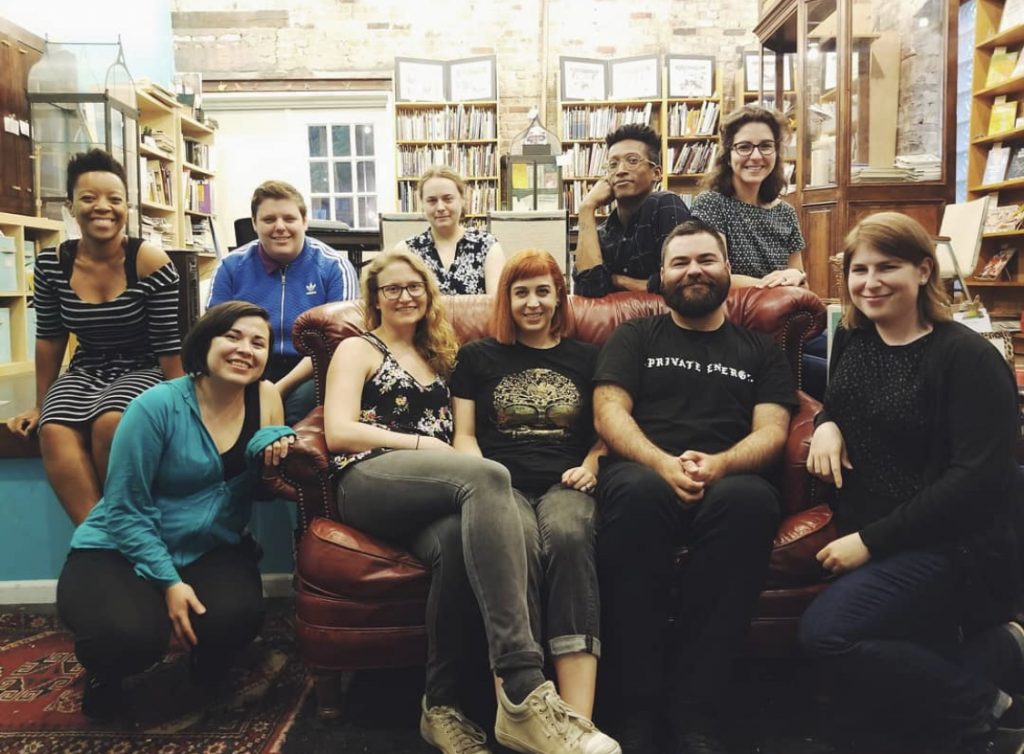
THAT’S A LITTLE BIT ABOUT OUR EDITORIAL WORK. NOW LET’S TALK ABOUT SIXTY’S LOVE FOR AND WORK WITH ARCHIVES.
While we always knew that archives were at the heart of the changes we wanted to make and the FUTURE CANONS we were envisioning, we at Sixty didn’t always know how approaching that area of knowledge-making and caretaking would take shape. We started by raising awareness through events called “Get Archived!” which asks artists of all levels to think about and be proactive with preserving their legacies. We started working directly with the librarians and collections at the Harold Washington Library.
And it also meant using our editorial arm to talk about archives and articulate the ways that it is directly connected to and a necessity of our communities.
Now, we’ve become much better at articulating what our archive-disruption work looks like and are now about to begin a process of redesigning our archive work around what we’ve learned and piloted over the past 10 years.
Before, I mentioned that it’s our desire to act as a bridge between cultural and archiving communities by creating opportunities for archivists, artists, and other cultural workers to collaborate, learn from one another, build lasting relationships, and ultimately find ways for archives to reach new audiences.
An example of this is the Chicago Archives + Artists Project, which [was co-created by Kate Hadley Toftness and] grew into a more permanent arm of Sixty in order to give more visibility to the quiet archival work we’ve done since our founding.
This project was an expansion of an artists and archives festival we hosted in 2017, and in 2018 this work grew into not only a festival, but a pilot year of 6 artist/archive pairings that concluded with new commissioned and archived works—and an exhibition at the Leather Archives which gave people the chance to see the commissioned works created from the pairings along with the collection materials that inspired them.
That year, we nearly tripled the scope and audience of our archive work, which made clear the growing desire for artists and archivists to be in conversation with one another and learn how they can create enticing opportunities to work together.
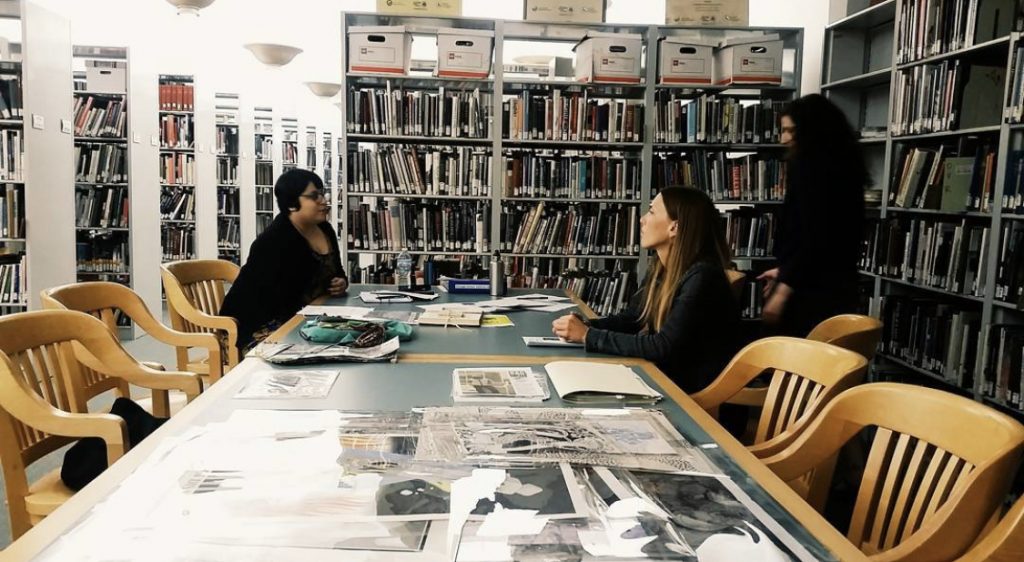
SO, THAT’S WHAT WE DO AND HOW, BUT I THINK IT’S ALSO IMPORTANT TO MAKE IT EVEN MORE PERSONAL AND TO TELL OUR ORIGIN STORY, which I think speaks to the heart of this idea of creating our future.
Sixty started out of deep grievances that Sixty’s other co-founders and I had with history as it was being taught to us and how that didn’t represent what we were seeing in and beyond Chicago, especially within our circles.
That absence was hard to accept when I actually came to Chicago because of its cultural legacy, particularly the Black cultural and activist legacy. I came to Chicago and by happenstance ended up in Bronzeville—a Black metropolis and cultural epicenter.
And let me tell you something about Bronzeville:
It is one of the birthplaces of the Johnson Publishing Company, which is responsible for historic publications like Negro Digest, Black World, Ebony Magazine, and Jet Magazine.
It was the home of an entire generation of people who shaped Blackness for this country and the world–like journalist and anti-lynching activist Ida B. Wells, librarian Vivian G Harsh, writer and activist Lorraine Hansberry, actor Marla Gibbs, athletes like Joe Lewis and Jesse Owens, musicians like Quincy Jones, Duke Ellington, and Nat King Cole. Writers and institution-builders like Alice Browning, Susan Cayton Woodson, and my forever-source of inspiration Dr. Margaret Burroughs who co-founded the South Side Community Art Center.
This was the neighborhood where Paul Robeson, Charles White, Katherine Dunham, Archibald Motley, Gordon Parks, Elizabeth Catlett, Black Panthers, founding members of AfriCOBRA, and so, so many others spent time. Beloved historian Timuel Black grew up here. When Cheryl Lynn Bruce and Kerry James Marshall moved to Chicago, this is where they built their home. And I learned that these were the streets of Gwendolyn Brooks, one of the most influential poets of the last century.
This neighborhood I found myself in was the home of these folks and was and is the home of countless other Black and queer artists, writers, cultural workers, educators, street scholars, shapeshifters, activists, abolitionists, poets, institution-builders, groundbreakers, trailblazers, rebels, seekers, dreamers, and lovers. It was and is a place where canon-defining institutions, newspapers, presses, and publications were created. It was and continues to be home to iconoclasts. Canon dismantlers and canon creators.
And all of this history was almost nowhere to be found in my art history education at Columbia College. As important as my time at Columbia was in helping me to understand value systems and mainstream canons, it was vastly different when compared to the curriculum that at times felt embedded in the streets of my neighborhood. And embedded in place like this one, the historic South Side Community Art Center, a place with an incredible history that pretty literally lines its interior and exterior walls and sits across the street from the home of Charles and Dr. Margaret Burroughs, also known as the birthplace of the DuSable Museum–on of the first museums in the country dedicated to Black history and culture.
I fault my grievances with the Western, colonial art historical curriculum that has been positioned as foundational and perpetuated through popular culture and so many cultural institutions as one of the main reasons why Sixty exists. That, combined with the self-determination that I was seeing in my own neighborhood—that very Octavia Butler “So Be It! See To It!” mentality. That future-casting, and future-making that is in the DNA of Sixty’s communities.
Sixty started, too, because as we stood at the edge of our graduation, we basically refused accept what we were being told were the primary paths for anyone studying art history—which is to strive for a phd, become a career scholar, and ultimately teach, or strive to become a chief curator or in some high-level position at a cultural institution. We weren’t necessarily interested in that, at least not then. Those weren’t the spaces where we saw the most invigorating work happening. Those weren’t the arenas where we or the artists who inspired and challenged us most were mainly operating. And as I mentioned before, these also weren’t necessarily the spaces where we felt welcomed or reflected.
It was then when we realized that we not only needed to promote the work we were seeing in informal, artist-run, community-based, and ephemeral paces throughout Chicago, but we also needed to change the narrative and to change the canon.
We quickly realized that there were others like us—emerging art historians, curators, artists, and cultural workers who had ideas, and were also soaking up the incredible work happening outside of Chicago’s most iconic and sometimes exclusive institutions. And they, like us, wanted a platform to share what they were seeing, the ideas they were exploring, and the work that even they themselves were creating.
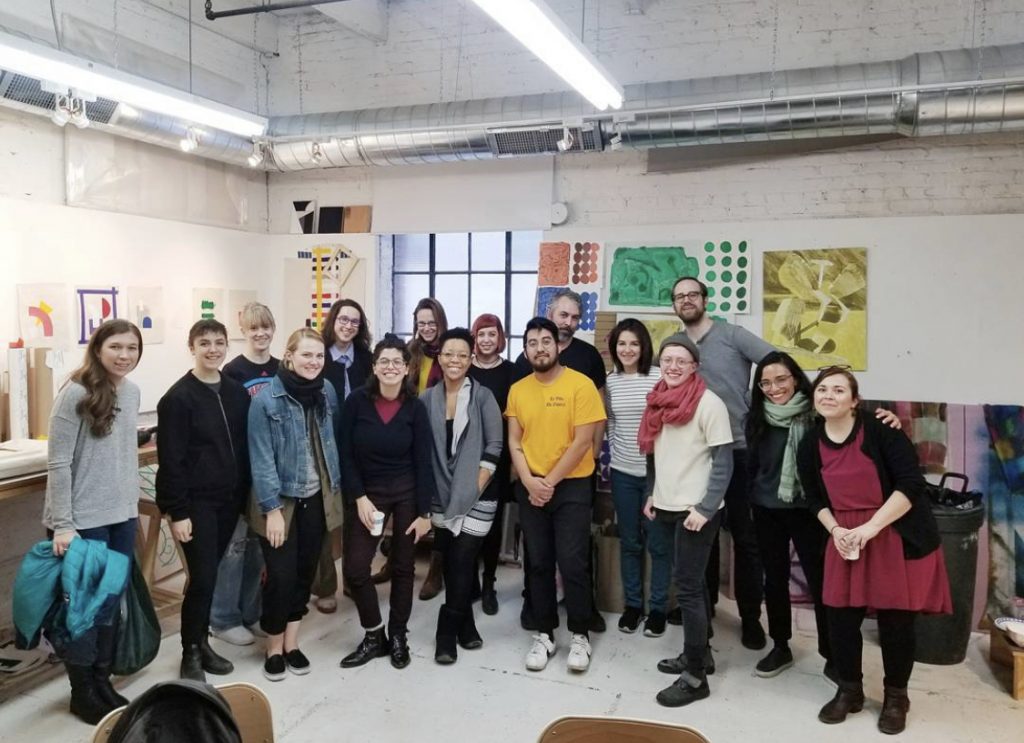
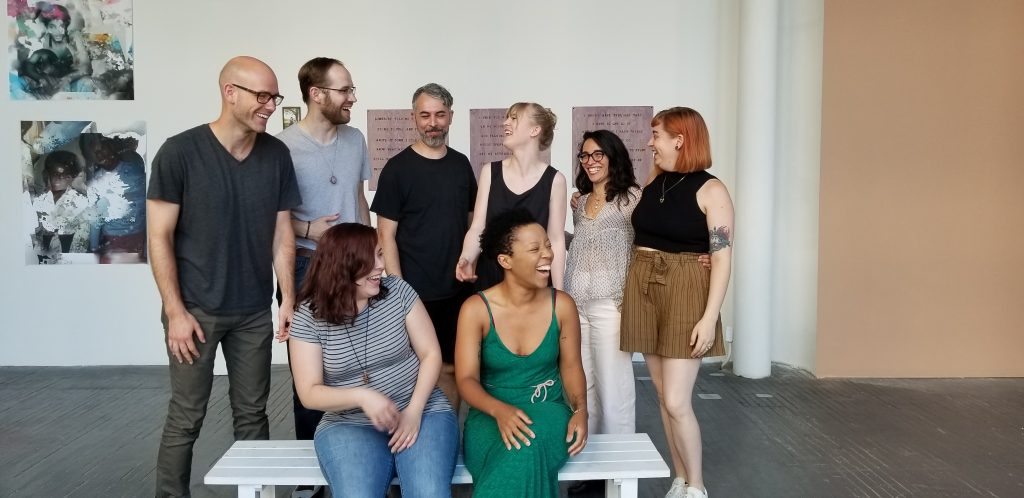
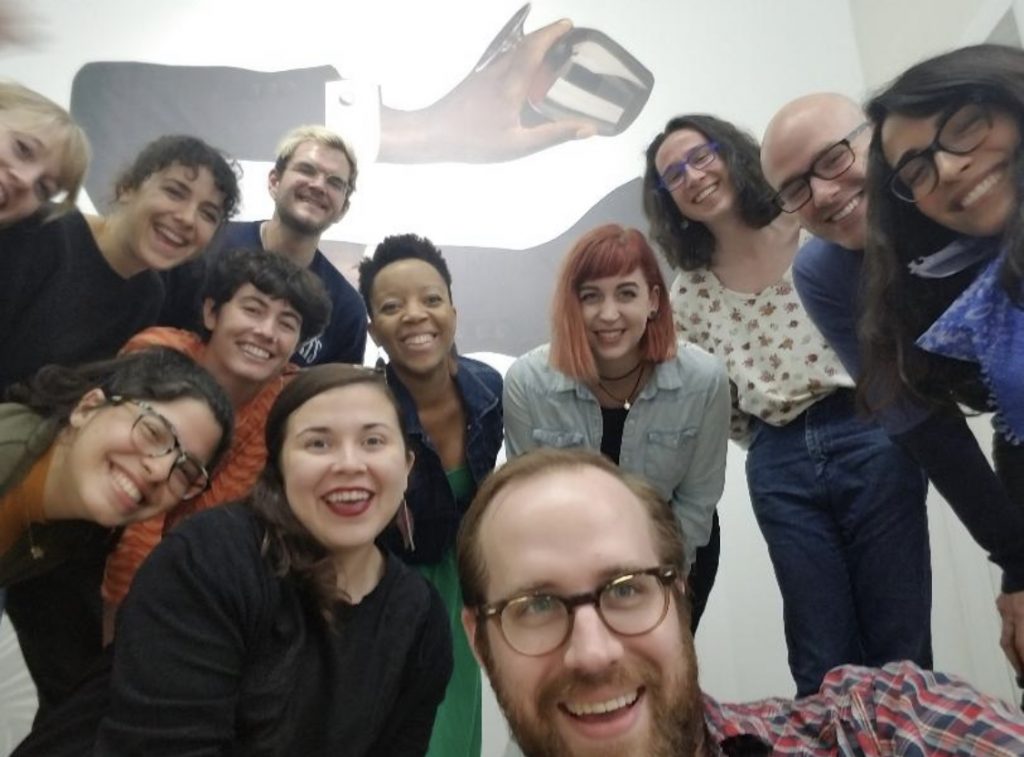
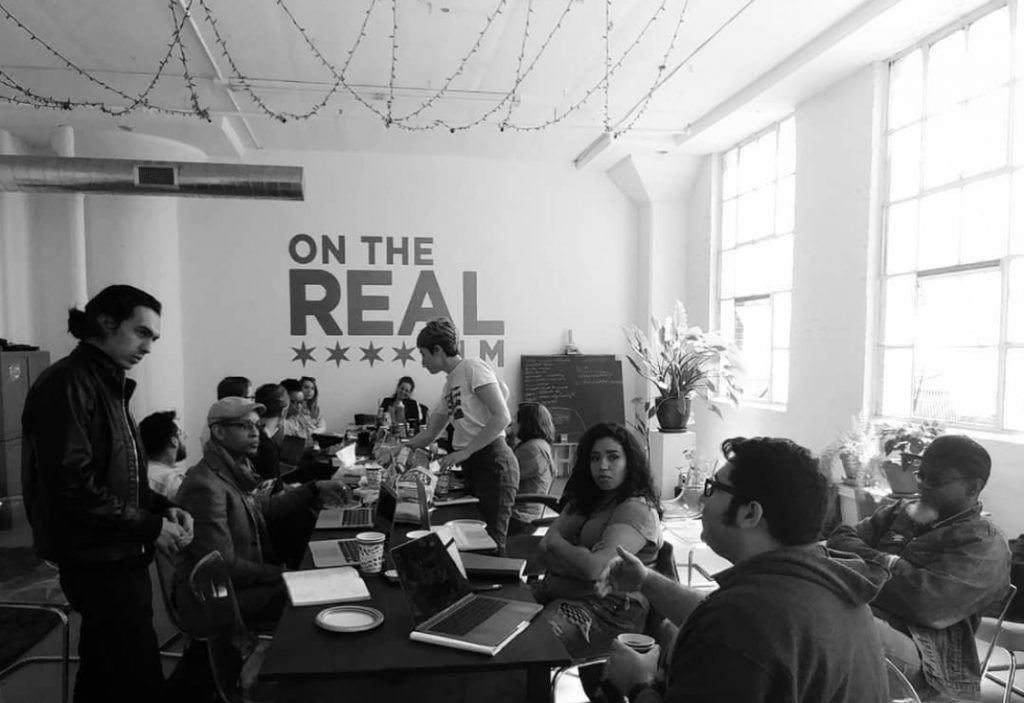
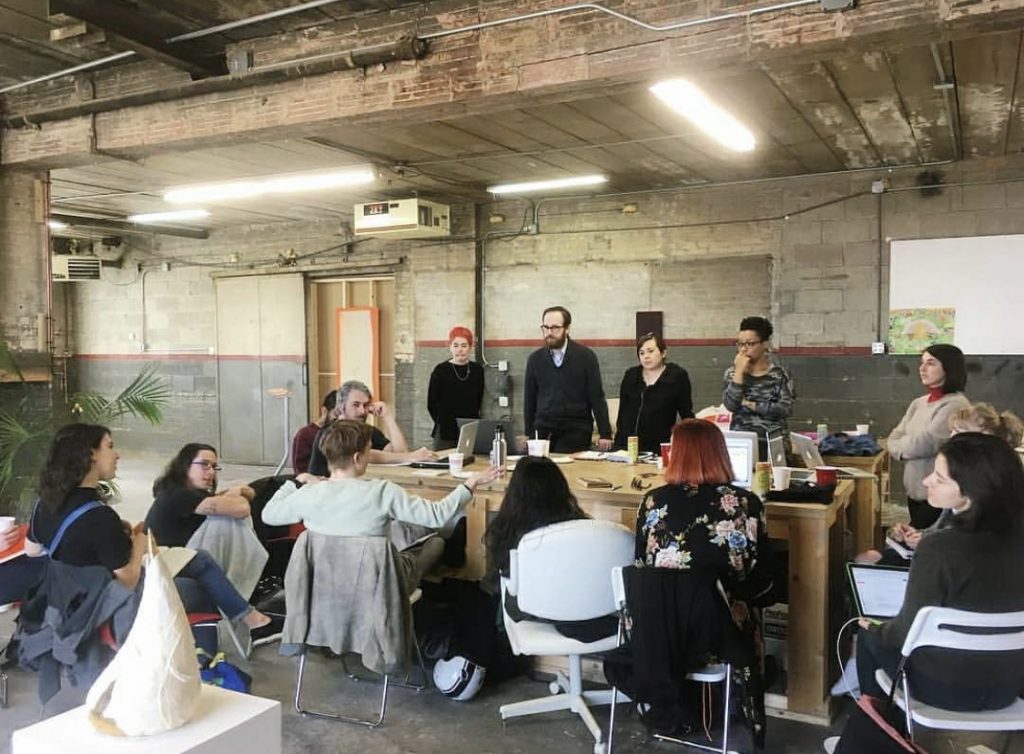
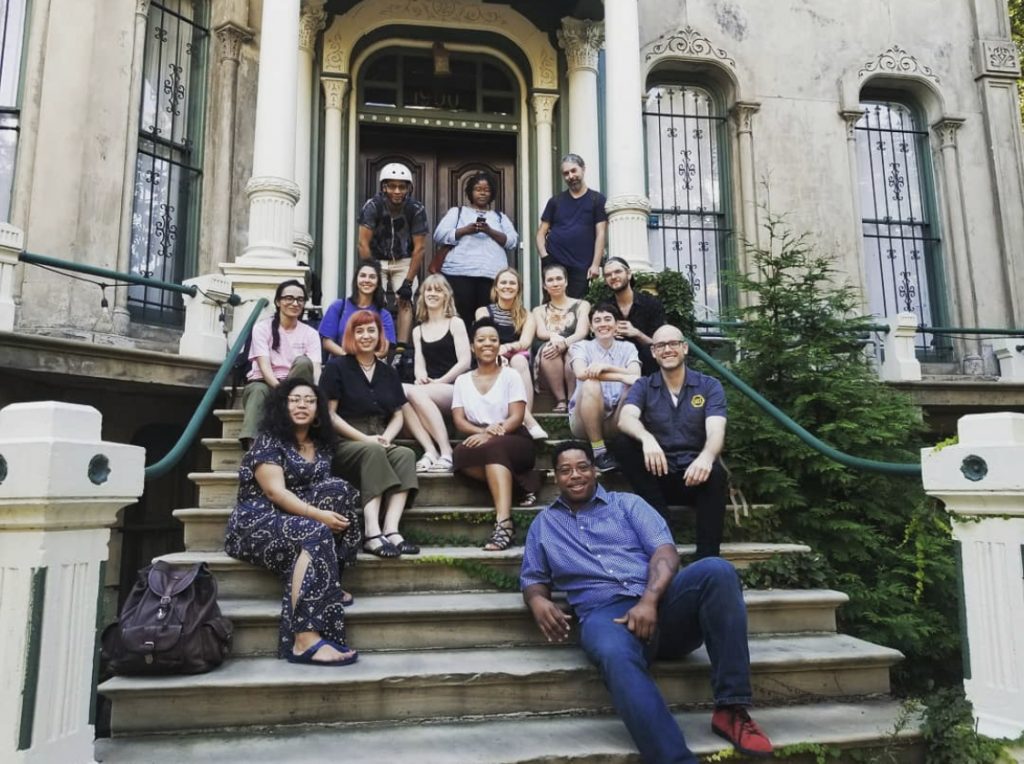
As newly credentialed art historians, we knew that we needed to get at the roots of the problem. We asked, “what are the best ways to disrupt art history and mainstream canons based on what we know to be true about how knowledge is created, valued, and shared?” What are the main areas of the cultural sector that we should focus on? How do these areas operate and how does that structure work against the FUTURE CANONS we seek to create? FUTURE CANONS that challenge gatekeeping, exclusivity, inaccessibility, erasure, and histories that are told without the perspectives of the people so often being talked about? How do we re-insert and prioritize the artists’ voice within cultural histories and knowledge production—and question how we’ve historically defined expert, scholar, or researcher?
We also wanted to challenge the idea that art historians had to exist primarily within institutions. We could actually be community-rooted, shift power, and interrogate concepts of authorship and expertise, and still be incredibly valid within art historical conversations.
Our work could prioritize theory and practice simultaneously, and we could make it our mission to redefine what those theories and practices are and whose theories and whose practices are being prioritized. We could infuse it with ancestral knowledge that comes from non-academic or institutional sources. We could prioritize generational knowledge, distinctly Black, Indigenous, and queer practices and methodologies.
If our mission was to disrupt mainstream cultural canons, it was also important to know which ones would need to be challenged, interrogated, and perhaps taken down a few notches. And we had to be willing to ask how we could create an organization whose structure lends itself to a more community-rooted and constantly evolving FUTURE CANON?
We constantly consider and work to make these questions and theories turn into concrete practices for Sixty. We constantly evolve the values and ethos at the heart of our work—the process of co-creation, co-leadership, individual agency, collective power, inclusiveness, autonomy, authorship, and power-shifting.
What we’ve become in 10 long and short years is something that is very different from other arts publications, which if I’m being honest, has made it hard for many to understand what we do and why. But we feel our difference is our superpower. Our hybridity, which places equal priority on content creation, accessibility, archiving, collaborative practice, and holistic FUTURE CANONS, is a reflection of the ways the future that’s ahead of us needs to be met. All of which is revealing itself to all of us more and more every single day.
“We will not rely on chance and hope that architects of history will include the histories that we nurture.“
For a decade, that difference has also kept us from being understood and deeply and substantially invested in by those with the resources to help us do what we do at full capacity, more consistently, and with the well-being of our team, community, and artists front and center. We’ve also received pushback as we try to open doors and pushback from institutional gatekeepers who aren’t quick to embrace the concept of crowdsourced, inclusive knowledge-creation that gives autonomy to everyone whether they were credentialed or not.
No matter how misunderstood we might be to some, we can’t change the fundamentals of what we do in any way that is inauthentic to who we are and the communities we serve. As an organization we know that working against decades of omissions and gaps, and attempting to secure access and placement of neglected cultural histories, artists, and storytellers within the coveted arenas of scholarship, academia, and research is key, but it’s a type of change and dismantling that can and will be met with resistance.
We will not rely on chance and hope that architects of history will include the omitted histories that we nurture. We will continue taking a complex approach to change the narrative on several fronts, and make sure the agents of change, a.k.a. the artists, writers, curators, and partners we work with, are equipped with the resources and access they need in order to contribute to and be leaders in that change.
Even with those challenges, I remain grateful because many of you within the archiving community have been early understanders and appreciators of our work.
As I continued to meditate on this theme, and what “Creating Our Future” looks like in practice, I couldn’t help but acknowledge that whether or not we knew it, Sixty was created out of that necessity.
In Chicago, nationally, and globally we are seeing more demands for more equitable, more just, and radically imagined futures. We at Sixty have always been working toward that.
The futures that are being demanded by protestors, grassroots organizers, the Movement for Black Lives, trans and queer activists, disabilitiy activists, and anyone at the margins hold at their core an ethos that is radically and unapologetically honest, restorative, nourishing, collectively created, and transformative. These futures welcome questions about value systems and the histories we’ve been told explicitly through history books and curricula or implicitly through violence, racist systems, and deep, relentless divestment.
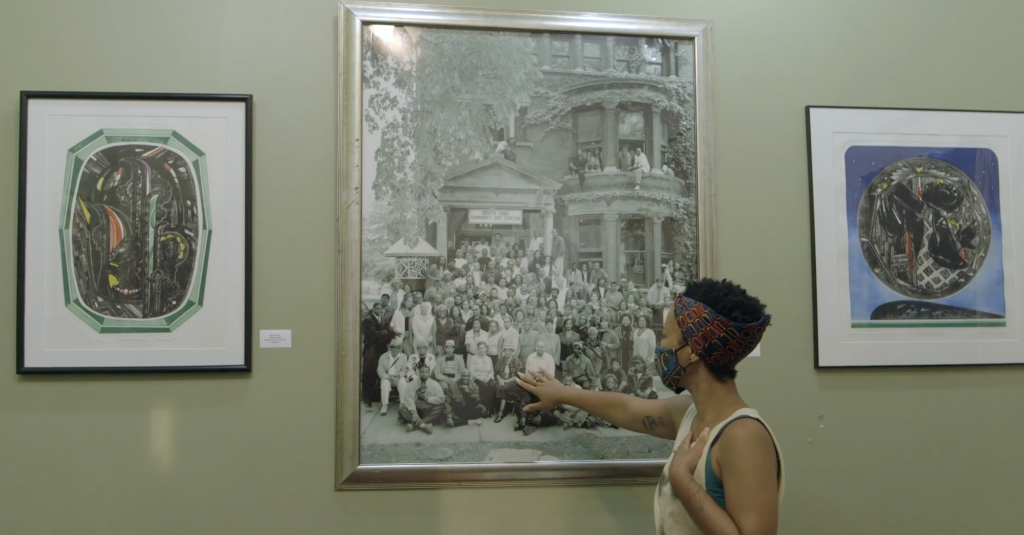
These futures, especially ones that are being imagined and co-created by Black, Indigenous, trans, queer, POC, and disabled people and our communities require a rewriting of these history books. It requires that we change the curriculum—who’s creating it, who has access to it, what it teaches, and how it communicates value or dismantles value systems that perpetuate and prioritize skewed histories steeped in the glorification of colonialism and individualism, or the erasure of genocide and slavery, or glorifies capitalism, and other narratives embedded within the horrific underbellies of our society.
All of you are people who know the power of history and the role it has in shaping every aspect of our society—the beauty of it as well as its how we understand our wounds and wrongs. So, you are the ones who know, perhaps more deeply than others, how important it is that the canon and the archives reflect this new future that protestors, activists, and the people are fighting for.
Since 2010, Sixty has been preparing for a moment like this. We have been dreaming of this future. We’ve been writing for it and amplifying the work of artists whose work articulates and illustrates it. We’ve been creating an organizational structure that embodies it. And we’ve been asking the archiving community to join us in this dream.
But now, more than ever before, this future feels like it’s at our fingertips.
This dream of queerer, Blacker, more Indigenous, honest, healing, and inclusive futures has been a reality that Sixty and so many others have seen manifesting and existing within our own circles, communities, and within the creative practices we have been researching and witness to for so long.
But it has also been so far from the mainstream for so long that it’s felt like a dream whenever we venture out of our communities and out of conversations and contexts that don’t value or share that dream.
To you out there, the caretakers of the materials and repositories that let us know that we’re here, and that we exist, I ask: do you know how important you are to me, to Sixty, and to everyone out there fighting for a future that works for all of us and not just some of us?
If I had any wishes for this group right now, they would be simple. I would wish that you leave this conference asking yourself whether the future you’re creating within the spaces where you do your work at all reflects someone like me and the artists, community scholars, curators, writers, and cultural workers that Sixty exists for. And if not, why? And what processes are you willing to challenge and change, what rules are you willing to bend and break, to do the type of historical caretaking that is ready to meet the kind of future that’s being demanded? Because it’s not a future that only a few of us want to see, it’s what we all need and deserve to see. And it’s not perfect, but it’s beautiful because it’s a future that reflects each and every one of us.
I have endless gratitude for each and every one of you, because without you my curatorial practice and Sixty Inches From Center likely wouldn’t exist. Thank you for all that you do.
Thank you to the SAA for offering me a space where I could tell this story. And I look forward to a future where we can all be together again, continuing to co-create canons that are healing, radically re-imagined, absolutely extraordinary—and no longer a dream.
__
Featured Image: Still of Tempestt Hazel, sitting on the stairs of the South Side Community Art Center in Chicago. From a video filmed by On the Real Film.

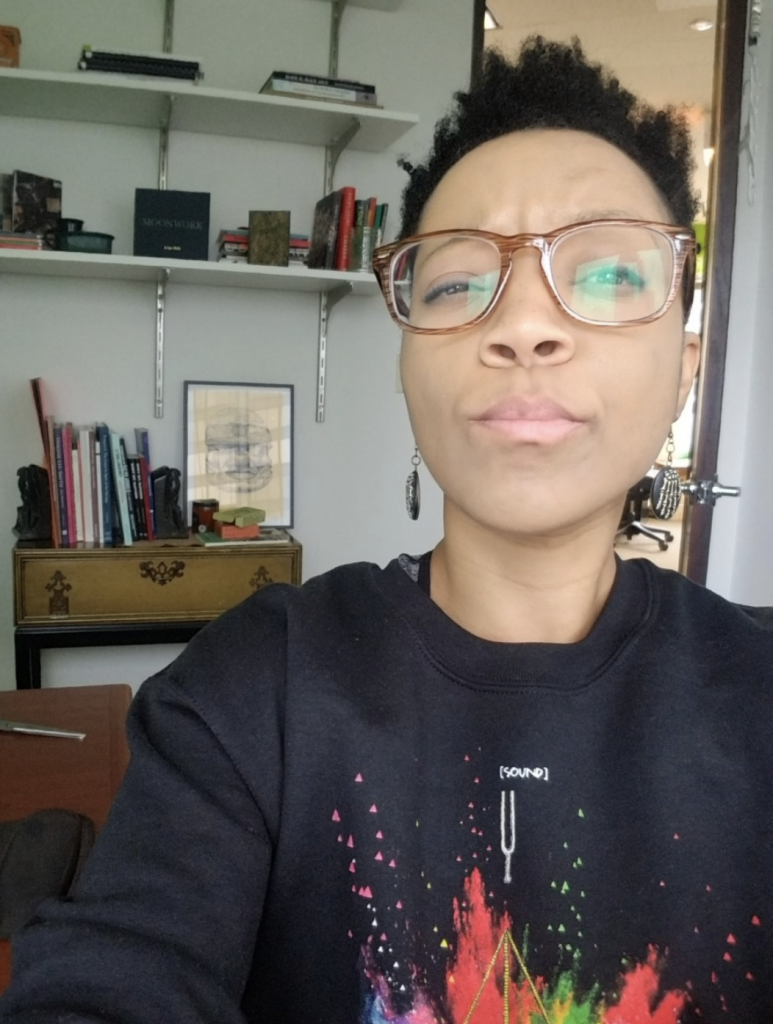
Tempestt Hazel is a curator, writer, artist advocate, and co-founder of Sixty Inches From Center. Find more of her work at tempestthazel.com.
